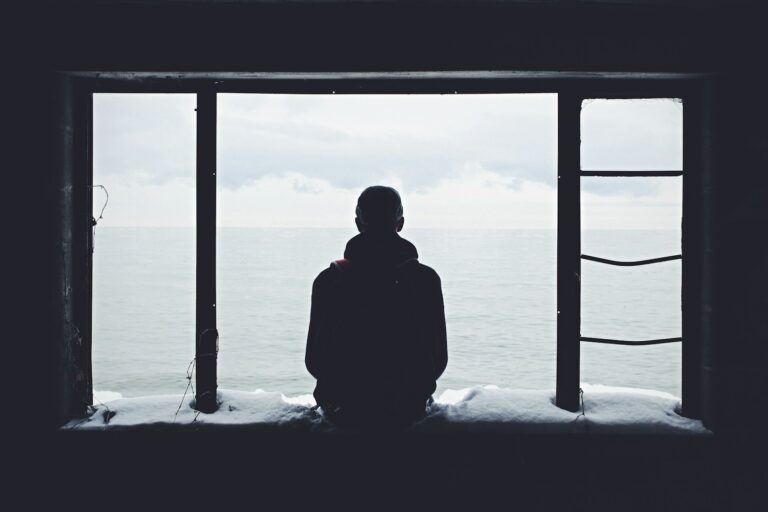Rejection is an unavoidable part of life, whether it’s not landing your dream job, being excluded from a social gathering, or experiencing heartache in love. It’s often said that rejection stings, but for many, the pain can feel all-consuming and deeply personal. Why does rejection hurt so much, even when we try to remind ourselves that it’s a normal part of the human experience? In this article, we’ll explore the psychology of rejection, why it triggers such powerful emotional responses, and what you can do to better cope with its impact.
The Universal Nature of Rejection
Almost everyone has felt the pang of rejection at some point. From playground snubs in childhood to complex romantic breakups in adulthood, being excluded or dismissed seems to activate something profound within us. Understanding why rejection feels so hurtful begins with acknowledging just how universal—and deeply impactful—it is.
Types of Rejection We Encounter
- Social Rejection: Being left out of group activities or not fitting in with peers
- Romantic Rejection: Facing unrequited love, breakups, or divorce
- Professional Rejection: Job rejections, missed promotions, or criticism from colleagues
- Familial Rejection: Experiencing distance, criticism, or lack of acceptance within one’s family
The sting of rejection isn’t limited to any one sphere of our lives—it can occur in any context where connection, acceptance, or belonging are at stake.
Rejection and the Human Brain: An Evolutionary Perspective
Why does rejection feel so acutely painful, even when it’s minor or fleeting? The answer lies in our evolutionary roots. Human beings are fundamentally social creatures. Our survival, for thousands of years, depended on group cohesion and acceptance. To be ostracized or excluded from the group meant jeopardizing one’s safety and access to essential resources.
Social Pain and Physical Pain: Neural Overlap
In a groundbreaking study by psychologist Naomi Eisenberger, researchers found that feelings of social rejection activate the same areas of the brain that process physical pain, particularly the anterior cingulate cortex. This neural overlap explains why rejection can “hurt” in a literal sense—it shares pathways with the sensation of physical injury.
Key Implications:
- The pain of rejection isn’t “all in your head”—it’s a biological response
- This overlap may have evolved to keep us motivated to maintain social bonds
- Being rejected may trigger similar stress and pain as physical trauma
Why Rejection Feels So Personal
Not all forms of emotional pain hit us equally, and rejection often cuts the deepest. Why is this?
The Threat to Self-Esteem and Identity
Rejection challenges our basic psychological need for belonging. When we experience it, we often interpret the message as not just “I wasn’t chosen,” but rather “I’m not good enough.” This can strike at the core of our self-identity and self-worth.
Common thoughts after rejection include:
- “What’s wrong with me?”
- “Why didn’t they want me?”
- “Am I just not good enough?”
This internalization makes rejection feel intensely personal, even when external factors may be at play.
Catastrophizing and the Rumination Trap
Our brains are wired to analyze potential threats. After experiencing rejection, it’s common to mentally replay the event, scrutinize every detail, and imagine worst-case scenarios. This process, known as rumination, often amplifies emotional pain and makes moving forward even harder.
The Role of Attachment Styles
Our early relationships shape how we respond to rejection later in life. Attachment theory suggests that individuals with “secure” attachment styles are more resilient in the face of rejection, while those with “anxious” or “avoidant” styles may be more sensitive or guarded.
- Anxious Attachment: More likely to fear abandonment, may experience heightened pain or clinginess after rejection
- Avoidant Attachment: May suppress emotional response but internalize feelings of unworthiness
- Secure Attachment: Better equipped to accept rejection without internalizing it as personal failure
Understanding your attachment style can shed light on why you may react especially strongly to some forms of rejection.
Social Media, Technology, and Modern Rejection
While our brains haven’t changed much since the days of small tribes and villages, the way we experience and perceive rejection has dramatically shifted in the digital age.
The Amplification Effect
Social media platforms enable instant—and often public—forms of acceptance and rejection. A “Like,” a “match,” or a “block” can feel like real-time feedback on your value and desirability.
The digital age has:
- Increased opportunities for both acceptance and exclusion
- Created visible metrics (followers, friends) that reinforce self-worth
- Made social comparisons and perceived rejection more frequent and immediate
It’s no surprise that online rejection (such as being “ghosted” or unfriended) can feel just as painful as real-life exclusion.
Coping Strategies: How to Heal After Rejection
If rejection triggers the same brain circuits as physical pain, can anything be done to cope more effectively? While healing takes time, there are several psychologist-recommended strategies to lessen emotional pain and bounce back stronger.
1. Practice Self-Compassion
Instead of blaming or criticizing yourself, talk to yourself as you would a dear friend. Acknowledge your pain, remind yourself that rejection is universal, and resist the urge to catastrophize. Self-compassion is proven to bolster resilience and reduce rumination.
2. Challenge Negative Self-Talk
Notice when you’re interpreting rejection as evidence of personal unworthiness. Replace unhelpful thoughts (“I’ll never be accepted”) with balanced statements (“This opportunity wasn’t right for me, but it doesn’t define my value”). Cognitive restructuring techniques can help break this harmful thought cycle.
3. Seek Support and Connection
Share your feelings with trusted friends or mentors. Talking about rejection can ease emotional pain and provide perspective. Seeking out new social opportunities or reconnecting with supportive individuals reminds you that acceptance is still possible.
4. Reflect and Grow
Sometimes rejection offers valuable feedback for personal growth. Ask yourself if there’s anything to learn from the experience, but avoid excessive self-blame. Reflection framed as learning, rather than punishment, can transform pain into progress.
5. Engage in Enjoyable and Meaningful Activities
Physical activity, creative pursuits, and volunteering are powerful antidotes to emotional pain. These activities elevate mood, distract from rumination, and potentially open doors to new connections and experiences.
Building Rejection Resilience: What Science Suggests
It’s impossible to eliminate rejection from your life, but you can build your “rejection resilience.” Research points to several strategies for strengthening your response over time.
- Normalize Rejection: Remind yourself that rejection is a common and expected part of pursuing goals and relationships.
- Focus on Effort, Not Outcomes: Appreciate your courage in putting yourself out there, regardless of the result.
- Develop a Growth Mindset: Treat setbacks as opportunities to learn, rather than as reflections of fixed traits or flaws.
- Expand Your Identity: Build self-worth on multiple pillars (work, hobbies, relationships), so that rejection in one area doesn’t collapse your entire sense of self.
- Practice Mindfulness: Learn to observe painful emotions without judgment or impulsive reaction. Mindfulness meditation is a proven way to manage emotional distress.
Special Considerations: When Rejection Pain Becomes Overwhelming
While occasional hurt from rejection is normal, for some, the pain can trigger lingering sadness, anxiety, or depressive symptoms. If rejection regularly leads to:
- Strong urges to isolate yourself
- Persistent feelings of worthlessness or hopelessness
- Difficulty functioning in daily life
It may be time to seek professional support from a therapist or counselor. Persistent rejection sensitivity can be linked to underlying issues such as depression, anxiety disorders, or past trauma—and these can improve markedly with support.
Why Rejection Might Hurt More Today Than Ever Before
Factors in modern society can amplify rejection’s sting. Our culture often emphasizes individual achievement and meritocracy, making perceived failure or non-acceptance feel like personal shortcomings. In addition:
- Online dating and job hunting have increased the volume—and pace—of possible rejections
- Exposure to curated, idealized images on social media can make even small rejections feel outsized
- Fewer strong, longstanding community ties can intensify feelings of isolation after rejection
Understanding these contextual factors can help you practice greater self-compassion and recognize when your feelings are being amplified by forces beyond your control.
Practical Tips: Dealing With Everyday Rejection
Rejection isn’t just dramatic or life-altering—it shows up in everyday life, sometimes in subtle ways. Use these practical strategies to navigate the small (and big) hurts:
- Pause and Breathe: Take a few deep breaths to create space between the event and your reaction.
- Avoid Immediate Retaliation: Don’t send a hasty reply or lash out. Give your emotions time to settle first.
- Validate Your Emotions: Acknowledge the hurt without telling yourself you “shouldn’t” feel bad.
- Reframe the Narrative: Instead of “I’m not wanted,” try “This wasn’t the right fit/service for me.”
- Remember Your Support System: Turn to friends or family for grounding and perspective.
How to Reframe and Learn from Rejection
Psychologists often point out that rejection, while painful, can be a powerful teacher. Here’s how to turn the sting of rejection into an opportunity:
- Reflect objectively: Try to separate facts from feelings. What actually happened, and what are you telling yourself about it?
- Distinguish between specific and global beliefs: Consider whether you’re generalizing (“No one will ever accept me”) or seeing this as a single, specific event.
- Identify actionable feedback: Is there anything constructive you can use from the experience to grow or improve?
- Recognize your bravery: It takes courage to put yourself at risk for rejection. Acknowledge your efforts rather than just the outcome.
- Redefine success: Sometimes, success is simply in the act of trying, rather than the result.
Conclusion: Turning Rejection Into Growth
Rejection hurts—sometimes more than we think it should. But understanding the evolutionary, psychological, and social factors that make it so painful can help you respond with greater self-awareness and resilience. Remember, rejection is a universal part of the human experience, one that touches everyone striving for connection and fulfillment.
You can’t always prevent rejection, but you can control how you interpret and respond to it. By practicing self-compassion, challenging negative beliefs, seeking support, and viewing setbacks as learning opportunities, you transform pain into growth. Ultimately, how you handle rejection defines your strength—not your worthiness or belonging.
The next time you face rejection, take heart: you are not alone, and this moment does not define you. With understanding and practice, you can master the art of bouncing back—and even thriving—after life’s inevitable setbacks.





